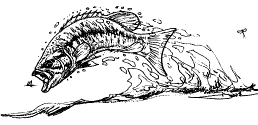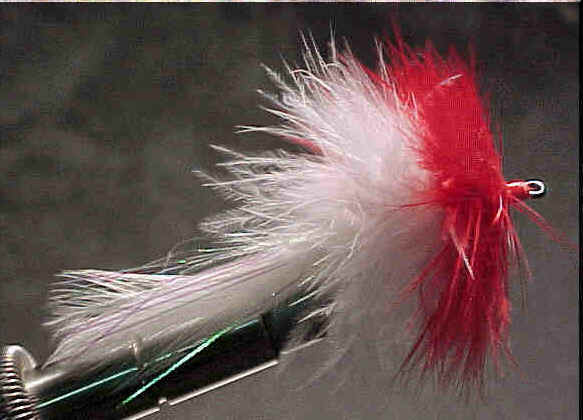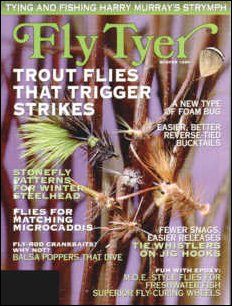
Check it Out

Headwaters:
a fish and angling art show
Here is a great selection of Hunting & Fishing magazines.
With 1200 Magazines to choose from you just can't go wrong
Help support this site by supporting our affiliates
All intellectual property and Pictures Copyright© of Robert Morger 1999. No reproductions of any material on this site is permitted without the express permission of the owner. All rights reserved.
The Onelist logo is a copyright of Onelist,Inc Copyright © 1998-1999, ONElist, Inc. All Rights
Reserved.
If you have suggestions or questions please contact rmorger@juno.com
Powered by counter.bloke.com
Tam's Soft Hackle Seaducer
 |
Hook -SS 4-3/0 (Gamakatsu recommended) Thread -Flat Waxed Nylon Tail - 4-6 Wide Hackles add 10-20 Strands Krystal Flash or Flashabou Body Hackle -4-8 Webby Bases from Strung Saddle |
| Tam's Soft Hackle Seaducer Pattern: Instructions: Start thread at bend, tie in hackles splayed inward even number per side of hook shank. Tie in flash materials on top and sides of hackle tail. Choose the largest webbiest hackle bases in the strung hackle, tie in and wrap thread forward and palmer hackle forward tightly. Trap the hackle with thread when you get to the less webby portion of the feather, clip off and start another webby base. Continue this process until you fill the shank to the eye. If you are doing a bi-color version stop when there is a small area left, use a slightly stiffer less webby hackle of another color and continue wrapping the shankf full to right behind the hook eye.. Whip finish a small head and seal with cement. Some substitutions if you wish: Use strung marabou instead of the bases from webby hackles. See the rest of the story or in other words what Tam has to say about this pattern at Aaron Adams great website: http://home.earthlink.net/~fishvet |

